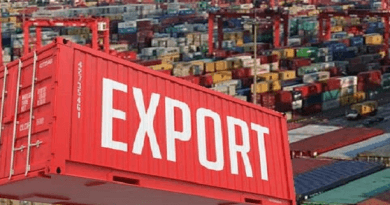Mobile money reached transaction value of $1.26 trillion in 2022
According to the GSMA’s annual ‘State of the Industry Report on Mobile Money 2023,’ mobile money services are increasing faster than projected around the world, as digital services continue to gain popularity.
The GSMA’s annual report, funded by the Bill and Melinda Gates Foundation, shows that adoption rates are even faster than projected, with the number of registered mobile money accounts increasing by 13% year on year, from 1.4 billion in 2021 to 1.6 billion in 2022. While it took the industry 17 years to achieve the first 800 million customers, the next 800 million customers have been reached in just five years.
Daily mobile money transactions reached $3.45 billion in 2022, beating the $3 billion projected in 2021. Between 2021 and 2022, the total transaction value for mobile money increased by an astonishing 22%, from $1 trillion to roughly $1.26 trillion.
However, more work is still needed in many locations throughout the world to enable marginalized groups gain access to safe, secure, and inexpensive financial services. With 1.4 billion people globally still unbanked, the GSMA Mobile Money Programme is collaborating with mobile operators and industry stakeholders throughout the world to build a strong mobile money ecosystem, boosting the relevance and utility of these services and ensuring their long-term viability.
According to the 2023 study, there are now 315 live mobile money deployments worldwide, with peer-to-peer (P2P) transfers and cash-in/cash-out transactions remaining among the most common use cases. Bill payments made with mobile money increased by 36% year on year, outpacing all other use cases, and the industry remains focused on use case diversification, playing a vital role in digitising economies.
Pandemic-driven adoption
As the world moves on from COVID-19, mobile money services have maintained the strong expansion that began during the pandemic. During the pandemic, up to 400 million accounts were created. This rapid adoption is partly due to the technology’s role in providing digital financial services to millions of consumers in low- and middle-income countries. This upward trend is expected to continue, with the number of accounts active on a 30-day basis increasing by 13% year on year to 401 million in 2022.
According to the analysis, mobile money-enabled international remittances would increase by 28% year on year to $22 billion in 2022. During the epidemic, many diasporas transferred more money to friends and family using mobile money than ever before. As a result, foreign remittances increased dramatically in 2020 and 2021, with many senders preferring mobile money for its efficiency, speed, safety, and cost-effectiveness. In 2022, the trend continued, albeit at a lesser pace.
Bridging the Gender Gap
Mobile money is also driving financial inclusion for the world’s unbanked, particularly among women in rural communities, where access to mobile money may be transformative and empowering.
According to the most recent GSMA data, however, there is still a mobile money gender gap that has been expanding over the last year, particularly in India, Indonesia, and Pakistan. Mobile phone ownership is one of the primary causes of the gender gap in mobile money adoption; however, a variety of additional restrictions and cultural conventions also prohibit women from using mobile money. As a result, women in low- and middle-income nations are currently 28% less likely to have a mobile money account than males.
Expanding agency networks
The number of mobile money agents expanded dramatically last year, rising 41% between 2021 and 2022. In 2022, the total number of agents increased from 12 million in 2021 to 17.4 million. In 2022, the number of active agents climbed by 25% to 7.2 million. A significant portion of this expansion came from Nigeria, where a more permissive regulatory system resulted in an increase in mobile money providers. Agents remained to be an indispensable aspect of mobile money services, accounting for two-thirds of all cash-in transactions in 2022.
The continuous expansion of mobile money around the world is encouraging. “For the first time, mobile money has given millions of unbanked and underserved people in low- and middle-income countries access to digital financial services,” said Max Cuvellier, GSMA’s Head of Mobile for Development. “However, even with this significant growth, there is still a long way to go to reach the over a billion unbanked people worldwide.” As a result, the GSMA encourages governments globally to continue adopting enabling regulations that can support mobile money deployments and accelerate the expansion of this critical ecosystem. This contributes to the faster digitalization of national economies and the development of financial resilience, allowing communities to support themselves in uncertain times.




